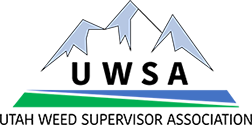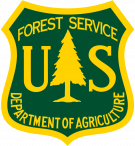BIOLOGY: Adults are 4-5 mm and have large zebra striped wings. Larvae are C shaped and found inside Canada thistle stems. Overwintering larvae form large had galls on stems. Adults lay eggs in stems in early summer. Larvae feed through the winter inside stems.
DESTRUCTIVE STAGE: Larvae (stem gall forming)
IMPACT TO HOST: Larvae mine into stems causing damage to plants. They are also known to introduce secondary pests such as fungi and pathogens. Stem mining weevils are best when used in combination with additional biocontrol agents.
REDISTRIBUTION: Difficult to collect. Available through purchase from commercial biocontrol vendors.
BIOLOGY: Adults are small, brown weevils 3-4 mm long with a rounded body. Larvae are small and found inside Canada thistle stems. Overwintering adults lay eggs on the ground in early spring. Larvae enter stems in early May, feed through July, pupate and emerge as adults in late summer.
DESTRUCTIVE STAGE: Larvae (stem feeding)
IMPACT TO HOST: Larvae mine into stems causing damage to plants. They are also known to introduce secondary pests such as fungi and pathogens. Stem mining weevils are best when used in combination with additional biocontrol agents.
REDISTRIBUTION: Difficult to collect. Available through purchase from commercial biocontrol vendors.
BIOLOGY: P. punctiformis is a naturalized fungus infecting Canada thistle. The rust fungus undergoes four life cycles. Aceiospores emerge in the spring and are visible as yellow fragrant spores on the undersides of leaves. Basidiospores become systemic and damage Canada thistle through summer. Teliospores are brown and fuzzy on the undersides of leaves in the fall.
DESTRUCTIVE STAGE: all
IMPACT TO HOST: Systemic fungal infections can completely kill individual Canada thistle plants. Fungus do not spread well on their own. Management like mowing or grazing will increase impact.
REDISTRIBUTION: Collect leaves infested with teliospores and release in new Canada thistle. Spores must come in direct contact with rosettes for successful establishment.
BACKGROUND: A native to southeastern Eurasia, Canada thistle reproduces by seeds and rootstock. It is adaptable to a diverse range of habitats.
OTHER COMMON NAMES:
DESCRIPTION: Canada thistle is a creeping herbaceous perennial plant usually from 1 to 4 feet tall, in sparse to extremely dense colonies. Leaves have spiny tipped lobes. Flowerheads are light pink to purple and are typically 3/4 inch in diameter. Bracts are softly spined. Bloom occurs in July and August.
CONTROL: Several biocontrol agents are available offering fair control. Herbicides can offer good control when applied to actively growing plants from spring to fall. As with most creeping perennials, digging or tillage is generally not effective.


